
Winter birds in the Heart of England Forest
There are plenty of wonderful birds to see and hear during the winter months in the Heart of England Forest. Whether they are long-term residents or just visiting, the birds in the Forest in winter face many challenges that come with colder weather and shorter days.
Winter in the Forest
From late December through to late March, the Forest sees many changes as the temperature drops and the daylight hours decrease. As the sheltering leaves turn brown and the last of the fruits fall, survival skills are put to the test. And if you are a little bird, it can be challenging.
Winter feeding habits
With as little as eight hours of sunlight, birds must work fast. Whether finding seeds, rummaging through leaf litter, probing for worms, or wading through shallow water, birds must make the most of the little daylight they have before danger arrives with the dark winter night.
Feeding in the Forest
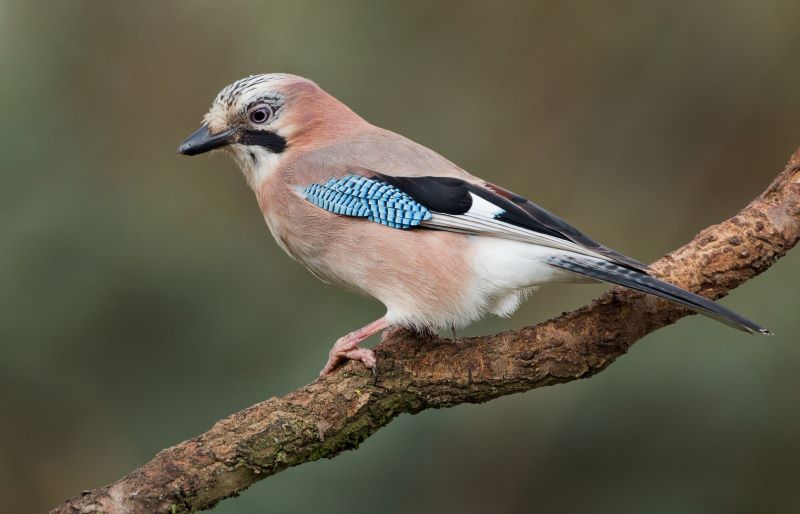
Different birds have different ways of coping when food is in short supply. Some of them migrate southwards to warmer countries, while others will stay in the Forest and tough it out. Birds change their feeding behaviour in winter, as they need an adequate amount of body fat to survive. They eat more food, more often, and rest longer to save their energy.
Some birds in the Forest, like jays and nuthatches, will even store food during the autumn in preparation for winter. Known as ‘hoarder’ birds, they hide seeds and nuts underground or inside tree crevices.
Feeding in gardens
Birds will sometimes seek food in gardens. Tree sparrows, woodpigeons, robins, and bluetits are all common garden visitors. It is estimated that there are 100 bird feeders per square kilometre in the UK. Birds will use feeders in the winter as an easy top-up meal. Foods like suet, mealworms and seed mixes are high in fat and give birds enough energy to forage for wild food sources in their natural habitat.
Birds of prey
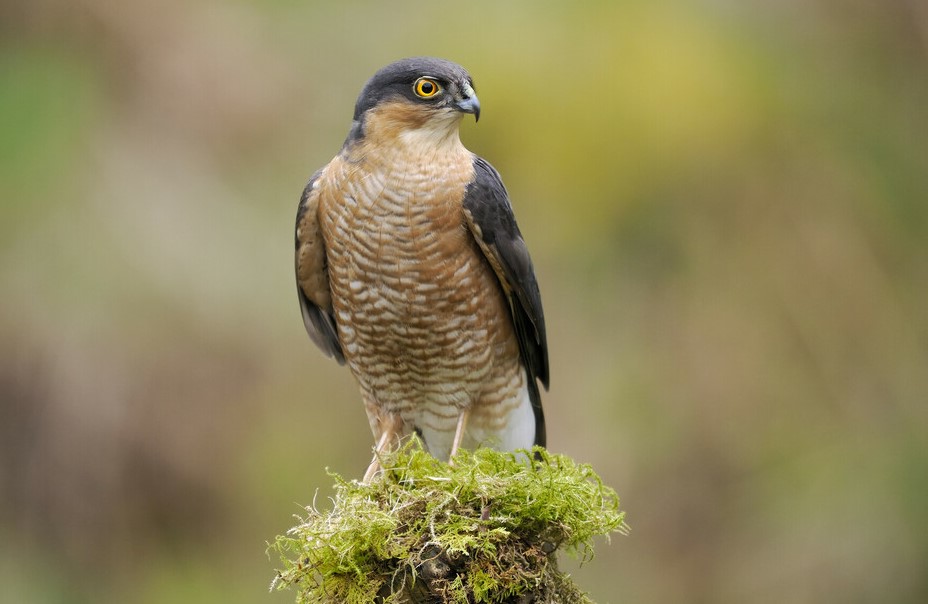
Flocking birds like starlings, finches, redpoll, and pipits encourage predatory birds to stay in the Forest through the winter. Red kites and common buzzards can be seen soaring high in the sky in search of a meal. Sparrowhawks, peregrine falcons, merlins and kestrels can also be spotted hunting around the Forest. Prey at this time of year can be scarce, as a lot of mammals, a common food source for predatory birds, are hibernating.
Those who like early morning walks in the Forest may encounter a hunting barn owl, a ghostly white predator, seeking small mammals buried under the snow. The familiar call of the tawny owl can also be heard in the early morning or late evening. Listen out for the male’s “hoo-hoo-hoo!” as he calls to his mate.
Some of our favourite winter birds
We asked some of the Heart of England Forest team members to tell us about their favourite winter birds.
Stonechat
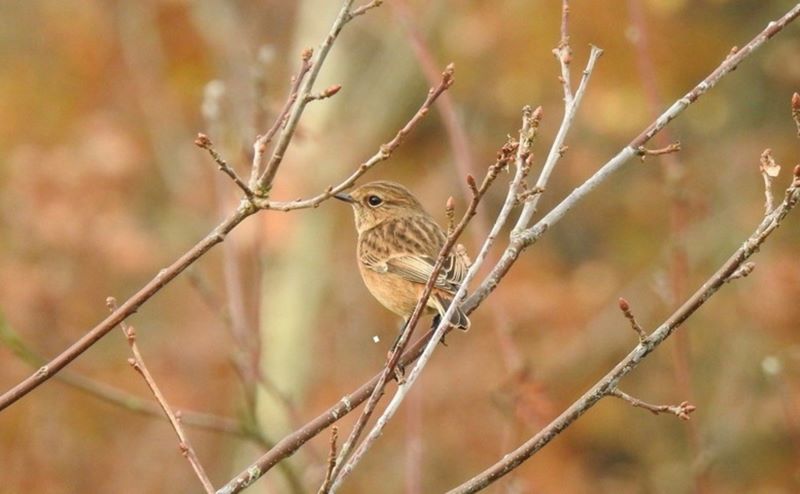
Sam Macvie – Biodiversity Data & Survey Officer
“Stonechats are my favourite winter bird and can be found throughout the Forest’s young woodlands and wetlands at this time of year. Females look superficially like the robin, albeit with only a slightly orange breast and mottled brown back. Males are far more identifiable with black head, white collar, darker back, and vivid orange breast. Even if you cannot see these features, their constant ‘wheat CHAT’ calls and insistence on perching at the top of whatever bramble, teasel, or protective tree tube is close by makes them instantly recognisable.”
Robin

Justin Fozard – Assistant Forest Ranger
“My favourite winter bird is the robin. I love how they puff out their red breast to keep warm when it gets cold. They are also really inquisitive and brave as they come close and wait for worms and grubs to appear as I am digging and pruning.”
Brambling
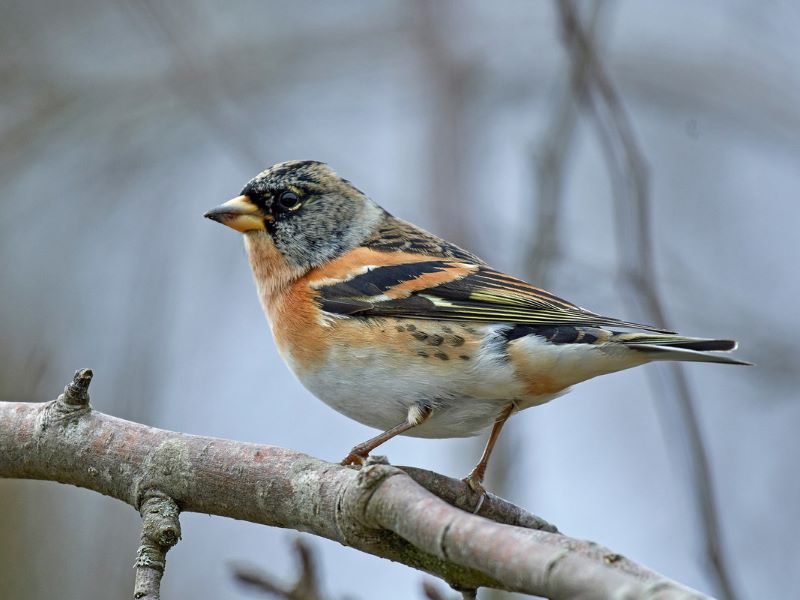
Avery Hill – Forestry Intern
“Bramblings, also known as ‘mountain finches,’ are my favourite winter birds. It is a lovely, small winter visitor from Eurasia, which loves our woodlands due to the presence of birch and beech. It especially loves the seeds from the beech trees! The males of this cute bird have a lovely speckled black head and orange breast, which makes it easy to identify them when out bird watching.
What I also love about bramblings is that they seem to join flocks of chaffinch, due to a similar habitat and diet requirements and finding safety in numbers. The joy of seeing huge numbers of chaffinch and bramblings together is indescribable.”
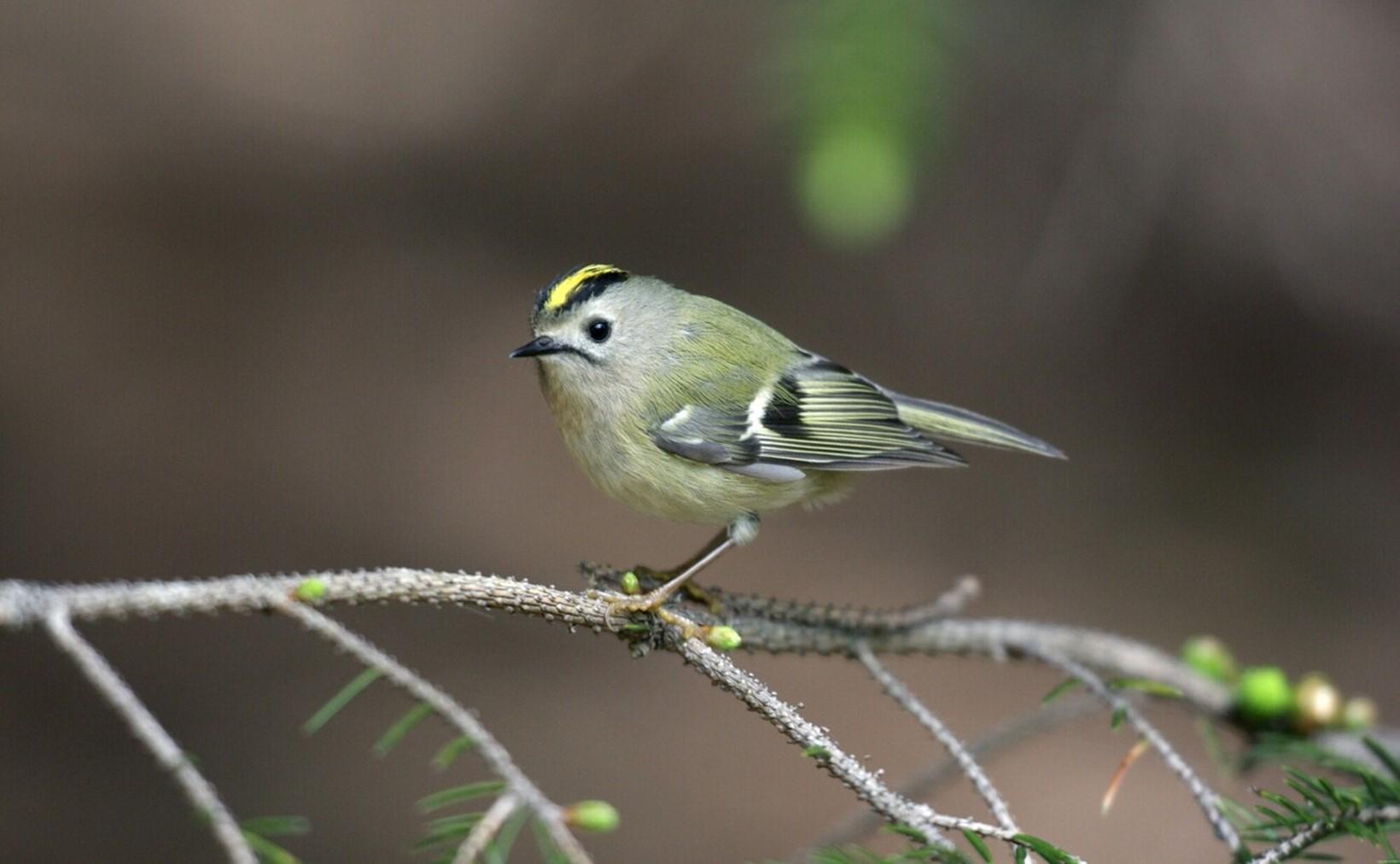
Goldcrest
Mark Clarke – Forest visitor and nature photographer
“TSI TSI TSI TSIIII - this is the call I have been listening for… Europe's smallest bird, a dumpy ball of energy and activity. The goldcrest is rarely still, and is a high-energy bird, flitting through foliage picking the tiniest of insects from the branches of trees. If you are lucky you will see an annoyed male display his 'golden' crest, a flashy orange Mohican, giving this little bird attitude beyond its size.”
Short-eared owl
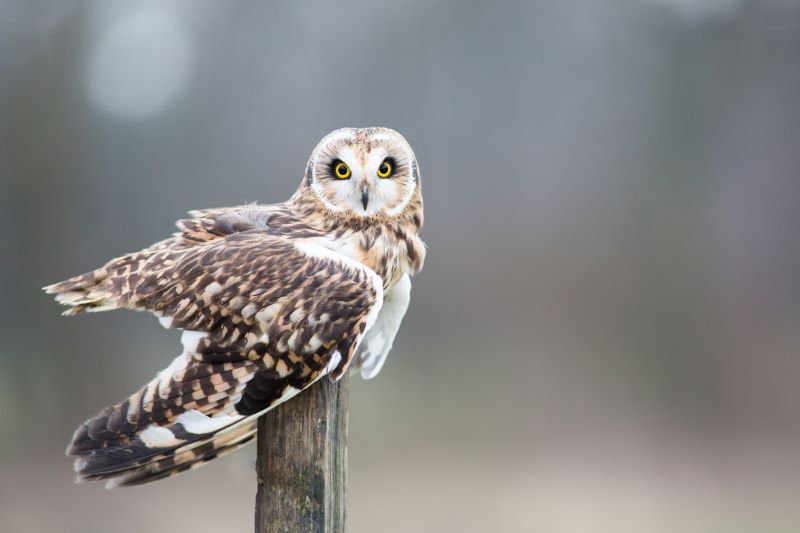
Ian Hayward – Senior Forest Ranger
“As a keen birder, when I was cutting my teeth in the field this species was always one that proved elusive. Around the Forest short-eared owls are here through most winters, but they are not easy to find even though they often hunt during daylight. That is part of the appeal, the mystery and challenge.
These owls are fans of our young woodlands and open spaces rather than the closed canopy habitats in our more mature woods. If you are lucky enough to be in the right place at the right time you might witness one pop up from the rough grass, quarter the field in search of a mouse or vole, then disappear back into the grass, all in total silence. Amazing birds! On top of that they have the most piercing yellow irises - if you are lucky enough to look one in the eyes.”
Redwing

Kelsey Wilson – Volunteer Assistant
“My favourite winter bird is the redwing. It is such a distinctive bird with its bold creamy eye stripe and the red/orange under its wings, which makes it easier to spot them. They are also sociable birds, as they are often found hanging out with fieldfares. I find them fascinating.”
Woodcock
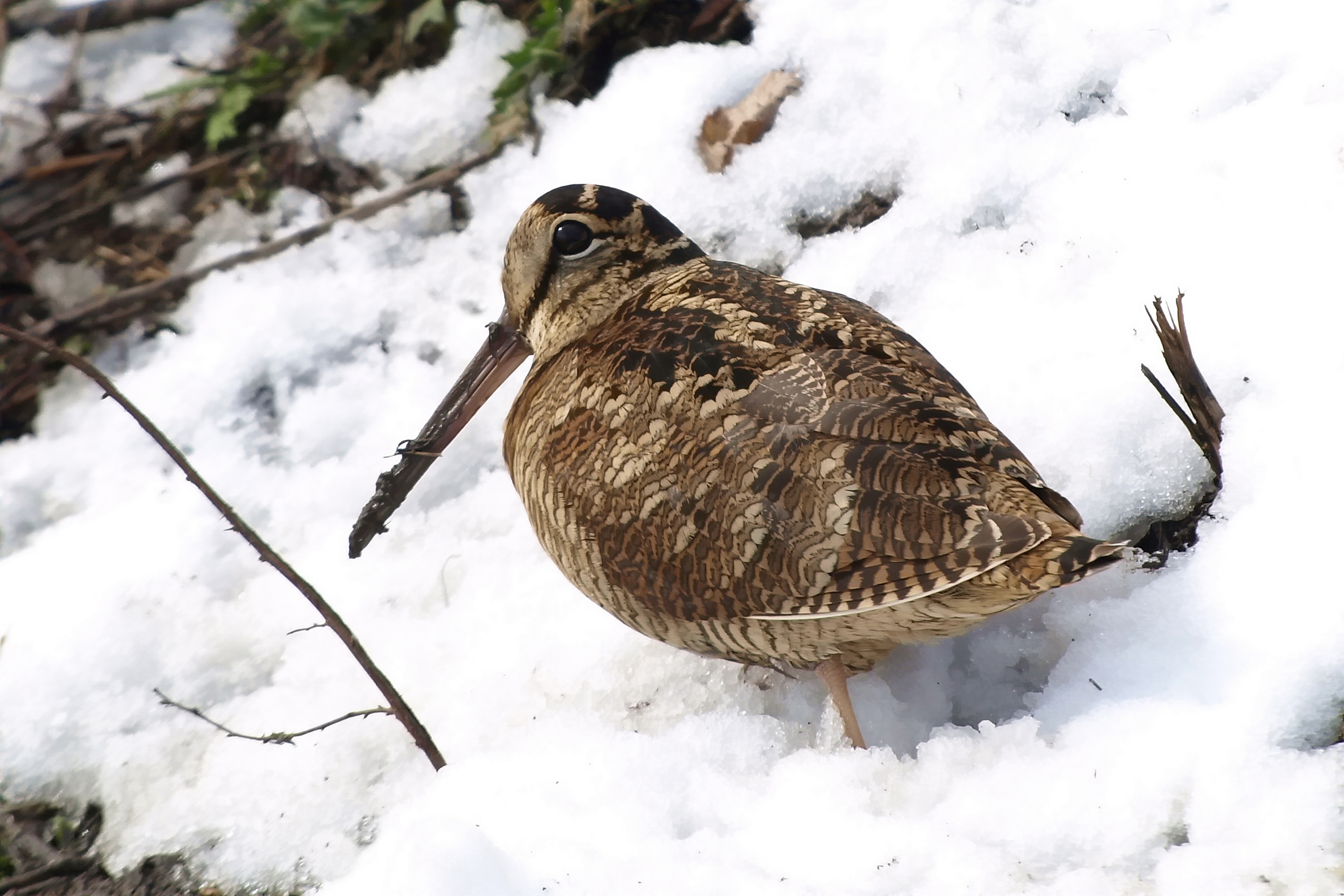
Tony Kelly – Volunteer, Birmingham University Ringing Group
“The woodcock is a secretive bird which can be very hard to see, due to a combination of its beautiful cryptic camouflage and mainly nocturnal habits. Its eyes are set almost like a turret on the sides of the head, giving almost 360-degree vision. The winter population is boosted by movements from Scandinavia and Russia. Because of using thermal imagers at night, I am now experiencing more encounters with these fabulous birds.”
Look and listen
When bird spotting in the Forest, make sure to look up in the trees or near the hedgerows as many birds find shelter among the twigs and branches. They can be easier to see when the leaves have fallen. Not only should you look carefully, but also listen as some bird songs can be easily identified. For example, the robin’s winter song is a sweet yet melancholic tune with a range of different notes.
See our winter birds spotter’s guide on our website for tips on identifying birds this season.
You can also record what you see by using an app such as the Birdtrack App from the British Trust for Ornithology and report your sightings to The Heart of England Forest by emailing info@theheartofenglandforest.org



